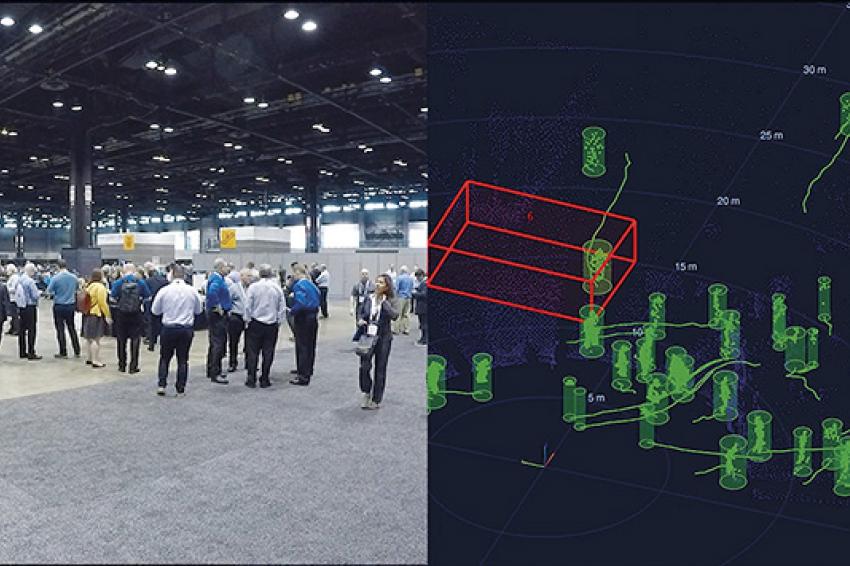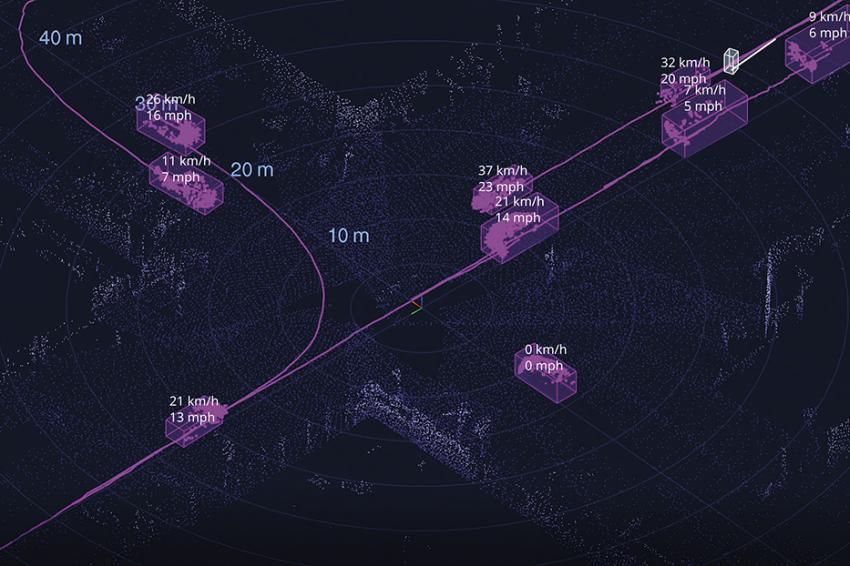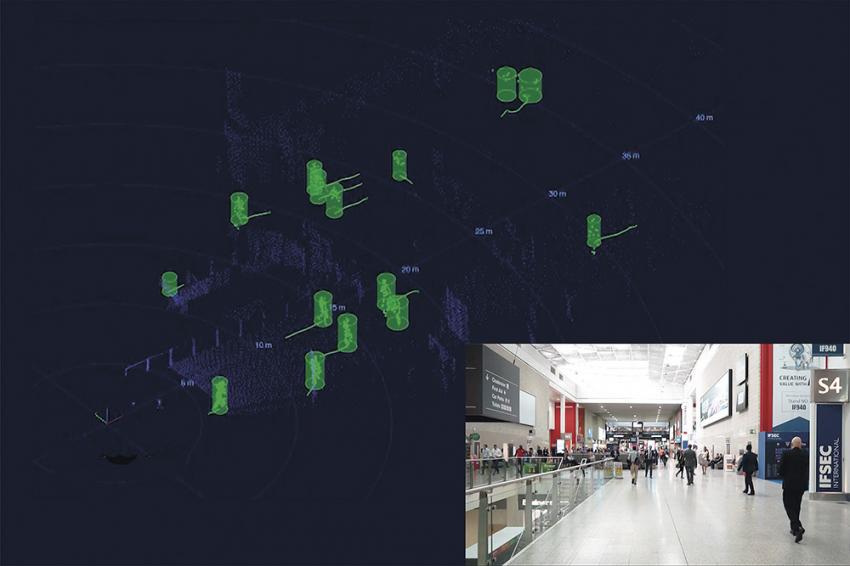Next Generation Security for Smart Cities with Intelligent Lidar
23.10.2020 - IoT solutions are rapidly expanding to improve infrastructure, efficiency, convenience and quality of life for residents and communities throughout the world. Society has grown to rely on connected devices like smart doorbells, door locks and security systems to keep their homes and families safe. However, many security systems lack the proper features to be feasible for commercial and municipal use cases. Lidar technology has the potential to tackle today’s pressing security challenges and open the door for many exciting new possibilities for smart cities.
Lidar’s advanced 3D perception provides accurate representations of surrounding environments with a detection range of up to 300 meters. Perception software combined with lidar can detect, track and classify objects to precisely indicate speed and real-time location. By combining advanced lidar sensing with edge computing to provide true 3D imaging data, end-users can implement lidar intelligence to enhance the future of smart cities.
No Matter the Lighting
Traditionally, smart security systems have relied on standard CCTV cameras alone, but lidar can work hand-in-hand with other sensing technologies, including cameras and radar to augment security systems. Because lidar functions well in darkness, direct sun and varying weather conditions, it is well-suited for many outdoor applications. Additionally, lidar is not easily blinded by flashlights, making it versatile for indoor applications as well.
It Fits In
Moreover, advanced lidar technology has made it possible to make the lidar sensor small and lightweight such that it fits in standard CCTV housing. Compact lidars can be installed and integrated in a variety of places, whether as a standalone solution or as part of a larger system.
Efficiency and adaptability are important factors when thinking about incorporating lidar into traditional systems. Customers have the option to separate the edge computer from the sensor to fit in a National Electrical Manufacturers Association (NEMA) cabinet for easy access. Integrators that install camera equipment can now rely on that experience to install lidar equipment in minutes, without having to spend time and money retraining their crew, allowing businesses to save costs overall.
Maximizing User Privacy with Anonymized Data
As privacy issues continue to dominate headlines, now more than ever, companies and government agencies need to take privacy into consideration for security and safety applications. Facial recognition systems are often criticized for infringing on people’s right to privacy, with some companies banning the use of facial recognition for surveillance. As privacy concerns continue to dominate headlines, lidar offers businesses an ideal solution for anonymized surveillance. Its advanced tracking capabilities allow personnel to identify unusual patterns or behaviors in locations such as airports, rail platforms, traffic intersections, building perimeters, and more.
Lidar’s high-resolution point cloud data can be used to provide information such as the location, size and velocity of a person or object, without showing facial features and other biometric information. This preserves the anonymity of people not involved in security incidents, unlike traditional security solutions which capture and store everyone’s data. This is especially useful for venues with specific customer groups, such as theme parks for children, which could be privacy sensitive.
Minimizing Data Burden to Open up Possibilities for Application
The revolutionary nature of lidar for smart security is apparent from some of its key strengths: superior 3D perception accuracy, ease of use and deployment and the ability to network multiple sensors together to seamlessly cover large areas. On top of that, lidar solutions require a much lower data and network bandwidth than cameras.
With a fraction of the data output of a video-based system, lidar enables information to be analyzed instantly for real-time decision making. This could also make it cost-efficient for companies to deploy lidar in a scalable network for a wide range of applications to ensure a safer smart city, including:
- Public safety: Enabling anonymized surveillance for intrusion detection, access control, zone safety and behavior tracking to keep people and businesses safe, while maximizing privacy. Additionally, monitoring for space capacity and crowd density to help operators comply with indoor social distancing rules.
- Law enforcement: Helping police accurately measure the speed of vehicles to better regulate speeding and other violations. As lidar requires lower data storage, record and replay of accident and crime scenes for effective assessment is easier.
- Smart intersection and traffic management: Monitoring for pedestrian and vehicle safety, enabling smart traffic lights to optimize wait times and providing accurate data on traffic density with real-time route status information.
- Public transit efficiency: Providing anonymized detection and crowd analytics at transit stations to ensure safety of transit users.
- Urban planning: Allowing urban planners to better understand how people move around and interact with public amenities, studying traffic flow for future planning of roads, buildings and parks, and identifying the impact of construction projects and potential safety hazards.
- Transport infrastructure: Tracking, profiling and classifying vehicles to provide real-time information to optimize electronic, remote tolling and parking management. This could help minimize contact between drivers and operators to ensure safety in a pandemic scenario.
- Smart retail: Analyzing how consumers navigate through retail stores, engage with advertisements and products on display, and move in queues or aisles so that retailers can optimize the shopping experience with increased efficiency and safety.
Currently, lidar has been deployed in multiple smart city projects across the globe. With the mass adoption of IoT devices, smart lidar systems have largely improved traditional security systems and infrastructures by increasing data accuracy and privacy, while also minimizing the data burden placed on network in the age of 5G. Lidar will revolutionize the next generation of IoT devices and help build a safer, smarter future.
Author: Klaus Wagner, Director of Product Management and Marketing at Cepton Technologies











